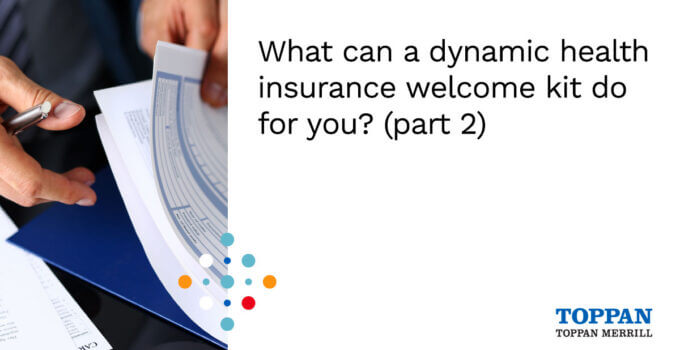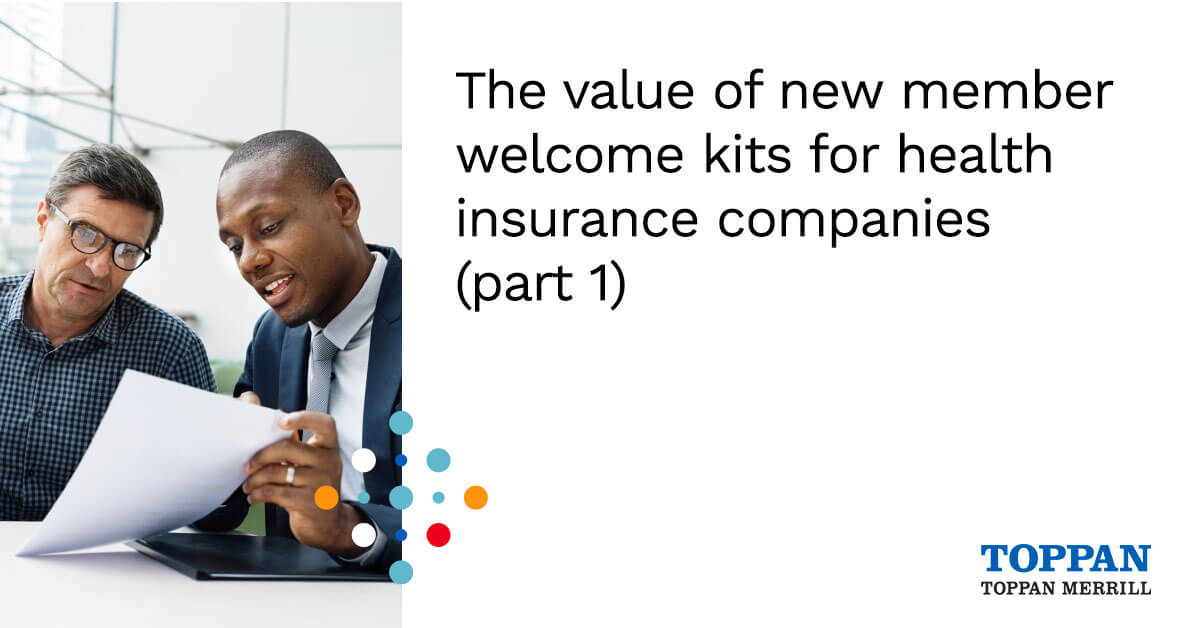Make visual appeal a priority
It’s easy to get caught up in the words when you’re creating a new health plan member welcome kit, but quality member communications materials should be visually appealing as well. This isn’t just a matter of aesthetics, but also for alleviating any possible member concerns and for communicating the necessary information.
Consider the following visual guidelines:
- Text should be easy to read on the page, while meeting any regulatory requirements that apply to your plan. If you’re welcoming members to a state plan, be sure to confirm you meet readability requirements for the state and service area. Employ bulleted lists and subheads, when appropriate, that can be read at a glance.
- Choose fonts that are clear and simple to decipher. Fonts that are too artistic or read like cursive can be laborious for readers to get through — and introduce an unnecessary risk that information might be misunderstood. Be mindful of accessibility standards. For instance, web copy, email, and other digital formats should work with e-readers.
- Make good use of photos. Use images that convey positivity and reflect a range of demographics. Opt for photos that depict people engaged in activities. The images should convey those members who are proactive in their health care and use their plans wisely, demonstrating that they lead healthy and fulfilling lives.
- Use white space liberally to break up text so that content doesn’t feel cluttered.
- Employ a color palette that conveys a sense of calm and is easy on the eyes. Be consistent in how you use colors in text, using ones that contrast well against the background. If subheads are in a different color, for instance, use the same color for each one, rather than distracting with a rainbow of unexpected hues.
It’s generally worthwhile for healthcare organizations to invest in good graphic design, whether utilizing full-time staff or on an outsourced basis, to ensure visuals are consistent and appealing. Talented designers can make outstanding pieces by bringing to the table not just experience and talent but also a knowledge of current design trends.
Highlight clear calls to action
Make it clear to your members what you expect them to do with the information in their welcome kit. Is it purely educational, or are there specific tasks they need to complete? Are there forthcoming materials they should be on the lookout for? Think about questions new members may have and tips that can help get them started on a path toward optimal health.
- Are member ID cards included in the kit? If not, when should they expect to receive them? Are there digital or printable versions they can access online?
- Do members need to create accounts and profiles to access information online? Is there a mobile app available that they can use to access their plan information from their device? If so, what are the instructions for downloading it?
- Will they need to choose a primary care provider? How can they find in-network doctors? Is there a form to fill out to designate their choice of PCP?
- Do they need to fill out a health assessment questionnaire? Or will they qualify for some sort of incentive if they do?
These types of tasks can easily be overlooked if the instructions are buried in the text of a welcome kit. The last thing a company should want to do is have a member be confused and frustrated as a result of missing important steps they were unable to find.
If there are actions you want members to take as they embark on their health plan membership, highlight them with bold text, icons, or text boxes. Consider pulling together a “getting started with your health plan” checklist.
It may be helpful to plan to follow up with reminders if certain required tasks aren’t completed within a designated timeframe. When sending reminders, keep omnichannel distribution in mind so that you’re following up through each member’s preferred channel of communication.
Include contact information
No matter how comprehensive your member welcome kit is, some members are bound to have questions. Don’t leave them hanging without answers, especially since these tasks need to be performed in a timely manner. Include contact information for your company’s customer service department so members know exactly whom to call or email if they need more information. Give complete instructions to help them navigate complex phone menus. Clearly state, “Press 1 to reach our member services department,” for example. If customer service phone numbers vary, give instructions for where to find it. For instance, the customer service number may be on the member ID card.
Remember, not all members want to communicate through the same channels. So, offer different options for those who might have questions but would prefer not to make a phone call. If secure messaging is available through your website or member app, give clear and complete instructions on how to find it and use it. For instance, say, “Log into the website. Look for the Contact Us tab and click on ‘Send a Secure Message.'”
Including clear contact information also assures members that answers to their questions about their health coverage are always accessible. The goal is to make it easy for members to reach out for additional information, manage expectations, and minimize any frustration they might encounter in the process. This aligns with the overall goal of conveying to members that your health insurance company is pleasant, approachable, and easy to work with.
Collect continuous feedback
Keep the feedback loop open, even after your welcome kits are sent out. Members, agents, employers, and benefits administrators may all have useful information about how well the welcome kits were received, as well as suggestions for improvements the next time around. Being receptive to this type of feedback, and engaging with those who want to provide it, shows dedication to improving your member experience and can help set you up for ongoing success.
One obvious place to start is by tracking the types of inquiries the customer service team receives in response to the welcome kit. If there are patterns in the types of questions new members are asking, look for opportunities to clarify that information in future iterations of your welcome kit.
In addition to collecting feedback from your members, it’s also a good idea to pay attention to industry marketing trends, and especially how they relate to your specific market. What are your competitors doing effectively? What innovations are evoking a positive response with consumers in your area? What challenges are on the horizon for your insurance business, and what steps can you take to proactively prepare for them?
When a consumer joins a health plan, whether through their employer or individual enrollment, often the first major communication they have with the health insurance company is receiving their new member welcome kit. These kits are more than just a touchpoint; they provide an overview of health plan benefits, educate new members about important resources, and start an important conversation on how members can get the most value from their benefit plan.
Taking the time to make your welcome kits useful and appealing will go a long way to keep the communication going between the consumer and health insurance company.
How Toppan Merrill can help
Toppan Merrill offers several services, including document creation and management, sales enablement, omnichannel communications, printing services, and more. We deliver best-in-class solutions that help you respond quickly to changes in regulations, client needs and markets.
Learn more about how we can help you with mission-critical content by visiting our website.

